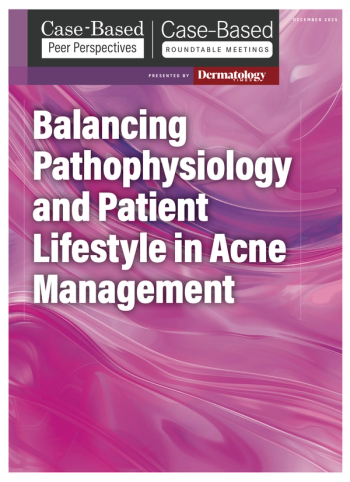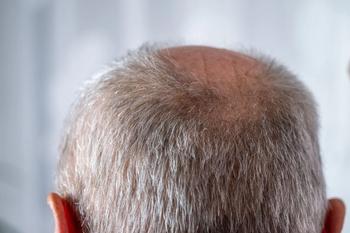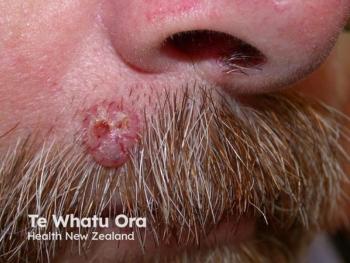
New Meta-Analysis Supports Targeted Vitiligo Therapies
Key Takeaways
- JAK inhibitors, like ruxolitinib, target the autoimmune basis of vitiligo, offering a novel therapeutic approach with promising results.
- Systematic review and meta-analysis indicate JAK inhibitors improve repigmentation, especially when combined with phototherapy.
Explore the promising role of JAK inhibitors in vitiligo management, highlighting efficacy, safety, and potential combination therapies for enhanced results.
Despite its prevalence, effective and safe long-term treatments for vitligo remain elusive. Conventional therapies, such as topical corticosteroids and calcineurin inhibitors, offer limited repigmentation and are frequently associated with adverse effects.1 This therapeutic gap has led to the exploration of Janus kinase (JAK) inhibitors as a novel approach targeting the autoimmune basis of vitiligo.2
Background
Vitiligo is now widely recognized as an autoimmune disorder wherein cytotoxic CD8+ T cells initiate the destruction of melanocytes by releasing interferon-gamma (IFN-γ). This cytokine subsequently activates the JAK-STAT signaling pathway, amplifying the immune cascade by recruiting additional T cells and chemokines such as CXCL9 and CXCL10. By disrupting this pathway, JAK inhibitors suppress the inflammatory milieu that sustains melanocyte loss.
JAK inhibitors have already demonstrated success in several autoimmune diseases, including rheumatoid arthritis and alopecia areata.3 In 2022, ruxolitinib, a JAK1/2 inhibitor, became the first FDA-approved treatment for vitiligo.4 However, questions remain regarding its long-term safety, cost-effectiveness, and suitability for widespread use.
Methods
A systematic review and meta-analysis adhering to PRISMA guidelines was conducted to assess the efficacy and safety of JAK inhibitors in vitiligo treatment. The study analyzed data from 36 studies—spanning randomized controlled trials (RCTs), single-arm studies, and case reports—culminating in a quantitative synthesis of 19 articles. The primary outcome measure was the percentage improvement in the Vitiligo Area Scoring Index (VASI), a validated clinical tool for assessing treatment response.5
Results
In a pooled analysis of three RCTs evaluating topical ruxolitinib, 30.3% of patients in the intervention group achieved a 75% improvement in facial VASI (FVASI-75), compared to 8% in the control group. While the risk ratio approached statistical significance (RR = 3.47; p = 0.051), the borderline p-value highlights the need for larger, more powered studies. Adverse events were common but generally mild; 49.4% of ruxolitinib users experienced adverse effects such as site irritation, compared to 42.4% in controls. Serious adverse events were rare but more frequent in the treatment group (1.9% vs 0.4%).
Meta-analysis of 4 single-arm trials reported a significant mean VASI improvement of 43.8%, with topical JAK inhibitors alone yielding a 44.7% improvement. These findings were corroborated by a constructed cohort of 28 patients from case reports. Oral JAK inhibitors, particularly when combined with UV-B phototherapy, demonstrated repigmentation rates up to 63.7%. Although these results suggest enhanced efficacy through combination therapies, the small sample sizes and lack of control groups limit definitive conclusions.
Systematic review findings further reinforced the potential of JAK inhibitors. For example, delgocitinib, tofacitinib and ruxolitinib—administered either topically or orally—showed successful repigmentation in various case series, including pediatric populations. Most adverse effects were mild, though some gastrointestinal and application-site reactions were reported.
The risk of bias was low in RCTs but moderate in single-arm studies. Funnel plot analyses indicated no significant publication bias, and the GRADE assessment showed moderate to high certainty of evidence for most outcomes.
Conclusion
The review found that JAK inhibitors—particularly ruxolitinib—represent a promising therapeutic option for vitiligo, offering targeted immunomodulation with a generally favorable safety profile. However, their efficacy in RCTs remains modest, and long-term safety data are limited. Combination therapies involving phototherapy may enhance outcomes but require further investigation. Until robust, large-scale trials confirm optimal protocols and long-term safety, JAK inhibitors should be considered an emerging adjunct rather than a definitive solution. Researchers suggested that future research should prioritize standardized outcome measures, cost-effectiveness analyses and inclusion of diverse patient populations to refine and expand vitiligo treatment strategies.
References
- Kubelis-López DE, Zapata-Salazar NA, Said-Fernández SL, et al. Updates and new medical treatments for vitiligo (Review). Exp Ther Med. 2021;22(2):797. doi:10.3892/etm.2021.10229
- Qi F, Liu F, Gao L. Janus kinase inhibitors in the treatment of vitiligo: A review. Front Immunol. 2021;12:790125. Published 2021 Nov 18. doi:10.3389/fimmu.2021.790125
- Palermo B, Campanelli R, Garbelli S, et al. Specific cytotoxic T lymphocyte responses against Melan-A/MART1, tyrosinase and gp100 in vitiligo by the use of major histocompatibility complex/peptide tetramers: the role of cellular immunity in the etiopathogenesis of vitiligo. J Invest Dermatol. 2001;117(2):326-332. doi:10.1046/j.1523-1747.2001.01408.x
- Sheikh A, Rafique W, Owais R, Malik F, Ali E. FDA approves Ruxolitinib (Opzelura) for Vitiligo Therapy: A breakthrough in the field of dermatology. Ann Med Surg (Lond). 2022;81:104499. Published 2022 Aug 28. doi:10.1016/j.amsu.2022.104499
- Mohammed AA, Lengyel AS, Meznerics FA, et al. Efficacy and safety of JAK inhibitors in the management of vitiligo: A systematic review and meta-analysis. Dermatol Ther (Heidelb). Published online May 7, 2025. doi:10.1007/s13555-025-01397-z
Newsletter
Like what you’re reading? Subscribe to Dermatology Times for weekly updates on therapies, innovations, and real-world practice tips.


















